鹿谷農會比賽茶需知:
在這麼龐大的會場,如何的評比變的十分的重要,會不會有舞弊的情形發生呢?這我們就必需了解鹿谷農會比賽茶整個比賽的流程就可知一般了。茶的類型繁多深奧,須以科學方式鑑定,為使每一比賽茶樣皆在相同條件下接受客觀的審查,故須「定量、定器、定溫、定時」。
定量:茶葉三公克
定器:審茶杯容量150cc
定溫:沸開水100度c
定時:浸泡六分鍾。
Lugu Farmers' Association Tea Competition Guidelines
In a big competition like this, fair judging is very important. But how do we make sure everything is fair and there’s no cheating? The best way is to understand the competition process!
Since tea comes in many types and flavors, it needs to be judged scientifically. To make sure every tea sample is evaluated under the same conditions, the competition follows four strict rules: same amount, same cup, same water temperature, and same steeping time.
-
Same Amount: 3 grams of tea leaves
-
Same Cup: 150cc tea evaluation cup
-
Same Temperature: 100°C boiling water
-
Same Time: Steep for 6 minutes
一、取樣編密碼:
所謂的取樣編碼是指每年鹿谷農會比賽茶交茶二天中,會有許多農民把比賽茶分好一包一包的到會場交茶,而每一包均需相同的重量,並且會放一張4碼的號碼紙(俗稱明碼),而這比賽茶會一箱一箱的封存,待大家全部交完後,會用電腦將全部明碼轉為新的密碼,轉好後會將資料光碟放在保險箱中封存,等到比賽完後才會開封,所以所有的密碼均無法知道茶主人是誰,也就無舞弊情形發生。
1. Sampling and Code Assignment
In the Lugu Farmers' Association Tea Competition, a coding system is used to ensure fairness. During the two-day tea submission period, farmers bring their competition tea, carefully packed in uniform bags of the same weight. Each bag includes a four-digit number tag (known as the "visible code").
All submitted tea samples are then sealed in boxes. Once all entries are received, a computer system randomly assigns new secret codes to replace the visible codes. The data is then stored on a disc and locked in a safe, only to be opened after the competition ends.
Since no one can identify the tea owners during the judging process, this system ensures a completely fair and unbiased competition.
鹿谷農會比賽茶交茶盛況
The Lively Scene of Tea Submission at the Lugu Farmers' Association Competition
鹿谷農會比賽茶標準秤重
Standard Weighing for the Lugu Farmers' Association Tea Competition
鹿谷農會比賽茶放號碼牌
Lugu Township Farmers' Association Competition Tea Placed with Number Tags.
鹿谷農會比賽茶依序排列
The competition tea of Lugu Township Farmers' Association is arranged in order.
鹿谷農會比賽茶抽檢農藥
Pesticide sampling of competition tea from Lugu Township Farmers' Association.
鹿谷農會比賽茶封箱存放
The competition tea of Lugu Township Farmers' Association is sealed and stored.
鹿谷農會比賽茶整箱待放
The competition tea of Lugu Township Farmers' Association is packed in boxes and ready for placement.
鹿谷農會比賽茶置放空間
The storage space for the competition tea of Lugu Township Farmers' Association.
二、秤茶取量
當所有的比賽茶均就續後,就到一個密閉的場所進行品茶,而室溫也均由中央空調調控定,品茶為了公平性,在審查前先抽取茶葉代表茶樣200公克,然後就其中秤取三公克茶葉放入審查杯。
2. Weighing Tea for Sampling
Once all competition teas are prepared, the tea tasting takes place in a sealed room with temperature controlled by central air conditioning. To ensure fairness, 200 grams of representative tea samples are selected prior to the review. Then, 3 grams of tea leaves are weighed from the sample and placed into a review cup.
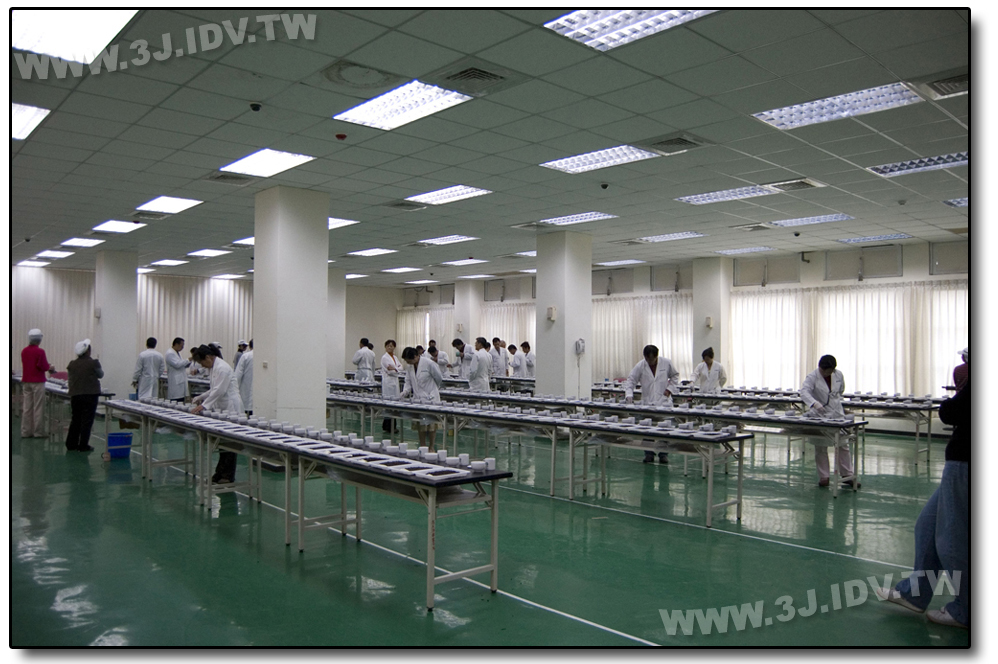
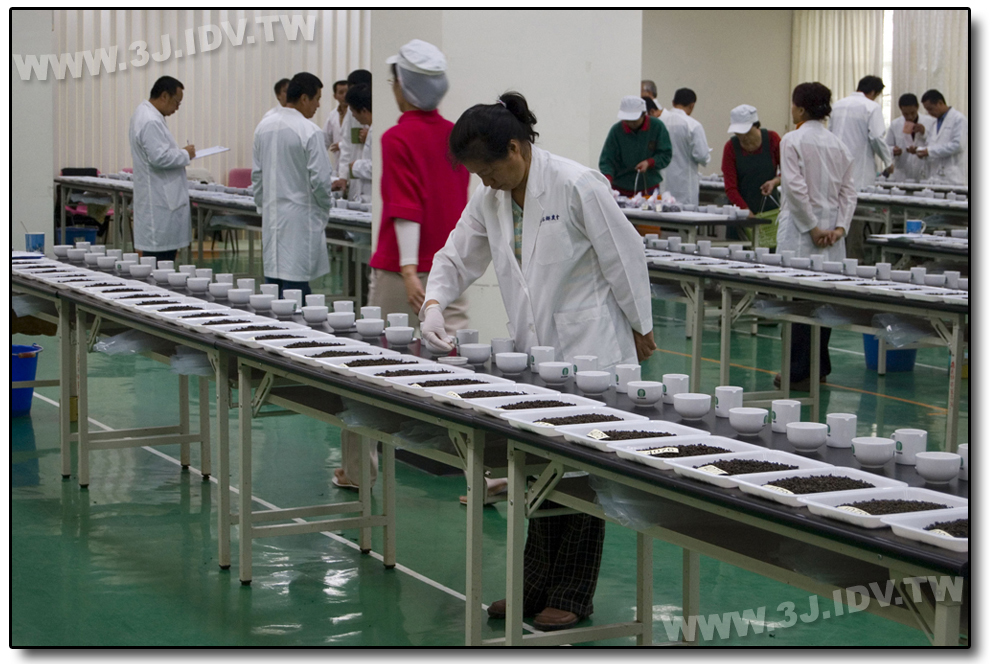
三、比賽茶沖泡
沖入沸騰之開水約145~150cc,加蓋靜置六分鐘,並將茶湯倒入茶碗供品質之品評,茶渣仍留置於杯中供香氣及葉底之審。
3. Brewing Competition Tea
Pour approximately 145–150cc of boiling water into the cup, cover it, and let it sit for six minutes. Then, pour the tea infusion into a bowl for quality evaluation. The tea grounds remain in the cup for the assessment of aroma and the inspection of the leaf base.
四、比賽茶開湯
沖泡六分鐘後,會一起倒在杯中,然後再等六分鐘後才開始品茶。茶湯開湯前先審查其外觀,至開湯後檢視茶湯水色。
4. Opening the Tea Infusion
After brewing for six minutes, the tea infusion is poured together into cups. It is then left to sit for another six minutes before the tasting begins. Prior to opening the tea infusion, the appearance is inspected; after the infusion is opened, the color of the tea liquor is reviewed.
五、審茶樣外觀
茶葉的外觀通常分為形狀及色澤,形狀是半球型,條索捲曲緊結整齊,茶身圓,不扁者為上品。如果形狀粗鬆或稍彎而捲,那表示茶菁原料粗老或布揉不足,品質就差了。其次看色澤,以呈鮮艷的墨綠色,表面帶有油光者為上品。如果呈黑褐色,則表示發酵過度,這種茶表示沖泡之後水色暗橙黃色,滋味雖濃但粗澀不清,且失去幽雅的清香,不算好茶。
形狀評語:細嫩、緊細、緊結、粗鬆、芽尖白毫、均整、團塊、黃片、碎片、老葉、末、紅梗及挾雜物等。
色澤評語:墨綠、翠綠、灰綠、青褐、光潤、枯暗等。
5. Appearance Review of Tea Samples
The appearance of tea leaves is generally categorized into shape and color. Regarding shape, a high-quality tea should be semi-spherical, with tightly rolled and well-arranged strips. The tea should be round and not flat. If the shape is loose or slightly bent and rolled, it indicates coarse or over-aged raw materials or insufficient rolling, resulting in lower quality.
As for color, an ideal tea exhibits a vibrant dark green hue with a glossy surface, which is considered top grade. If the color appears blackish-brown, it suggests over-fermentation. Such tea will yield a dark orange-yellow infusion with a strong yet rough and unrefined taste, lacking the elegant aroma, and therefore cannot be considered good tea.
Comments on Shape: Fine and tender, tightly rolled, tightly bound, loose, bud tips with white fuzz, uniform, clumped, yellow fragments, broken pieces, old leaves, dregs, red stems, and foreign substances, etc.
Comments on Color: Dark green, emerald green, gray-green, dark brownish-green, glossy, dull, etc.
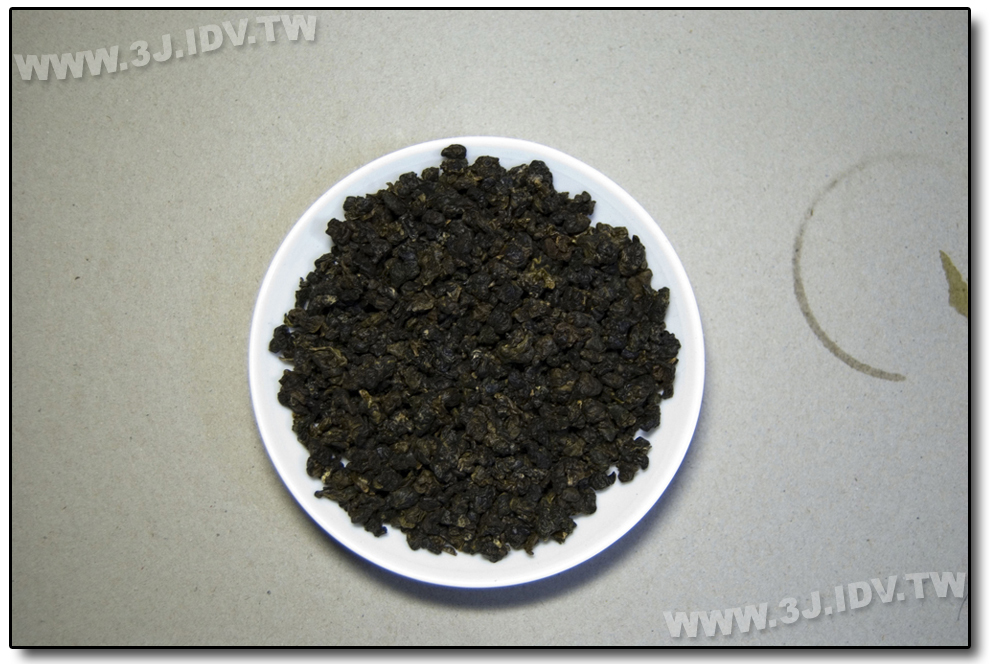
六、觀茶水色
以橙黃色,澄清明亮具有光澤,杯底沈澱物少為上品。經過焙火之後,水色呈琥珀色要保持濃香就不易,其技術須控制得宜。春茶為橙黃色,夏秋茶為稍濃橙黃色,冬茶為金黃或淺橙黃色。凡是水色淡薄、暗黑混濁者品質較差。
水色評語:綠黃、黃綠、金黃、橙黃、橙紅、明亮、混濁、暗黑等。
6. Observing Tea Liquor Color
A high-quality tea liquor should be orange-yellow, clear, bright, and glossy, with minimal sediment at the bottom of the cup. After roasting, the liquor takes on an amber color; maintaining a rich aroma at this stage requires precise technique. Spring teas are orange-yellow, summer and autumn teas are slightly deeper orange-yellow, and winter teas are golden or pale orange-yellow. Teas with a pale, dark, or cloudy liquor are of lower quality.
Comments on Liquor Color: Greenish-yellow, yellowish-green, golden yellow, orange-yellow, orange-red, bright, cloudy, dark, etc.

七、聞茶香氣
要有幽雅的清香,飲後芳香撲鼻,滿口濃厚而溫和,近似桂花香。聞香時在鼻腔後部的嗅覺感受特有香氣的濃淡即分辨。另一方面品嚐茶湯入口後以舌尖振動湯液並將口腔中的茶香藉由鼻後,通道從鼻口呼出而辨別。聞香應以溫聞及冶聞配合進行,聞香類別及高低以溫聞為宜,冶聞主要是了解茶葉香氣持久程度或則評審當中兩種茶的香氣,溫間時不相上下,此時可依據聞的餘香程度加以區別。評審香氣時,抽香煙、擦香脂粉、香皂洗手等都會影響評審香氣的準確性,評審前應避免之。
香氣評語:清香、幽雅、純和、甜香、火香、高火、焦味、
青嗅、悶氣、陳茶、煙氣、雜味異味等。
約5分鐘後,聞杯中茶渣之香氣,以鼻吸氣鑑評香氣
同時將口腔中之香氣經鼻孔呼出即可鑑定香氣的純度與高低,
溫度降至35~40℃間,再次重複前項試湯液的動作。
7. Sensing Tea Aroma
The tea should exude a graceful and elegant fragrance, with a lingering aroma that fills the mouth and gently spreads, resembling osmanthus flowers. While detecting the tea's unique scent, the intensity of the aroma is distinguished by the olfactory sensations at the rear of the nasal cavity.
Furthermore, when tasting the tea, the tongue vibrates slightly to circulate the tea liquid in the mouth, and the aroma from the tea is expelled through the passage from the nose to identify its distinctiveness. Aroma assessment combines warm sensing and gentle sensing. Warm sensing determines the type and level of tea aroma, while gentle sensing evaluates the durability of the tea's fragrance or compares the aroma between two samples. When the aromas are similar during gentle sensing, they can be further distinguished based on the lingering fragrance.
For accurate aroma evaluation, activities such as smoking, applying perfumed products, or washing hands with scented soap should be avoided before the review, as they may interfere with the assessment.
Aroma Descriptions: Delicate fragrance, elegant, pure and harmonious, sweet aroma, roasted aroma, intense roasted scent, burnt smell, green scent, stale odor, aged tea, smoky scent, off-notes, or foreign odors, etc.
Approximately five minutes after brewing, the aroma of tea grounds in the cup is evaluated by inhaling through the nose. The purity and intensity of the aroma are further assessed by exhaling the aroma from the mouth through the nostrils. As the temperature drops to 35–40℃, the previous steps of tasting the tea liquid are repeated.
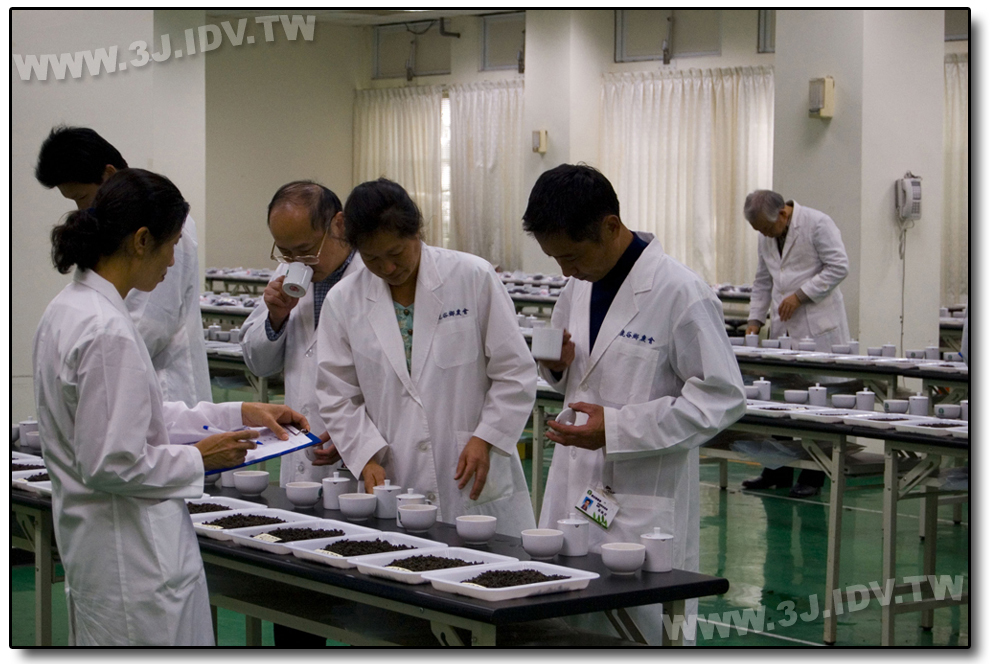
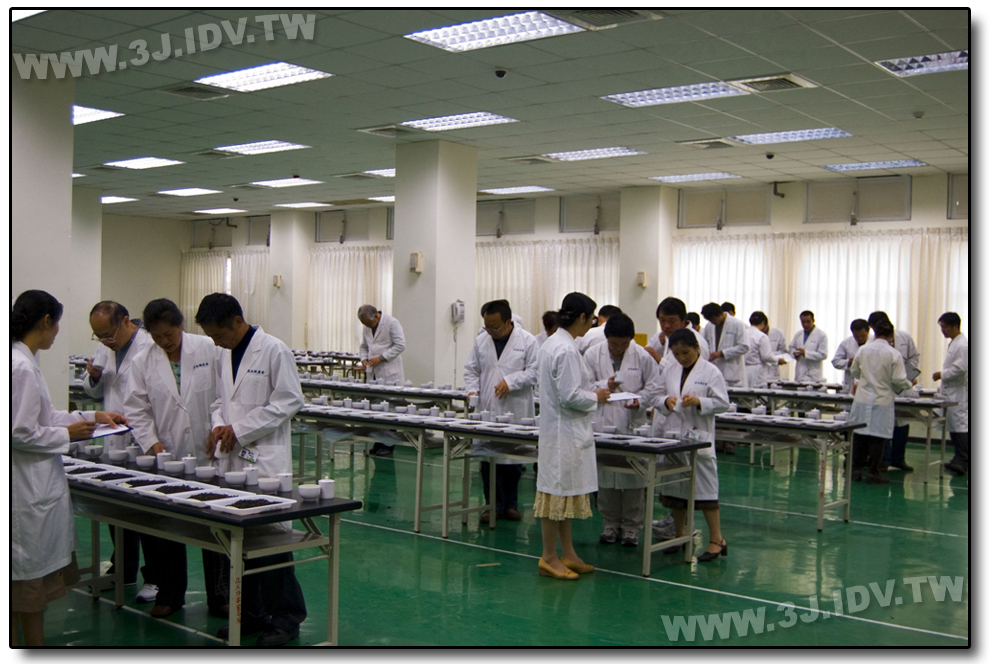
八、評茶滋味
等茶湯溫度降至40~45℃間,取茶湯5~10cc,含入口中,以舌尖不斷振動湯液,使茶湯與口腔內之味覺細胞及黏膜不斷接觸而分辨湯質,勿將茶湯吞下。以入口甜甘、醇厚圓滑、富有活性,有喉韻持久的特性為上品。茶質要優良經過焙火後,火侯之高低均可,但不宜有焦味。一般嚐滋味的溫度由高而低,以45~35℃溫度較適宜。如茶湯溫度太燙時,味覺受到強烈刺激而麻木
遲鈍。如嚐湯溫度較低,則易麻痺敏感度差。茶湯入口要用舌頭循環打轉,主要由於舌頭各部位的味蕾對味覺有不同感應。如舌頭尖部位的味蕾對甜味敏感,舌根對苦味最敏感,所以茶湯在舌頭上振動循環來回才能辨別茶味特徵。
8. Evaluating Tea Taste
Allow the tea liquor to cool to a temperature between 40–45℃. Take 5–10cc of the tea liquor into your mouth and continuously vibrate it with the tip of your tongue. This ensures the tea interacts fully with the taste buds and mucous membranes in the mouth to distinguish the tea's quality. Avoid swallowing the tea liquor. High-quality tea should exhibit a sweet and mellow entrance, a rich and smooth texture, vitality, and a lingering throat sensation.
The roasting level of the tea can vary, but it must be well-controlled to avoid burnt flavors. Generally, tasting should progress from higher to lower temperatures, with an optimal range of 45–35℃. If the tea is too hot, it overstimulates the taste buds, causing numbness. Conversely, overly cool tea diminishes sensitivity.
When tasting, use your tongue to circulate and rotate the liquid within your mouth. This is essential as the taste buds in different regions of the tongue respond differently: the tip is most sensitive to sweetness, while the base detects bitterness. By vibrating and circulating the tea across the tongue, the unique characteristics of the tea's flavor can be discerned effectively
九、觀茶葉底
茶渣的色澤、葉面展開度、柔軟度、葉片、芽尖是否完整無破碎,並判別茶菁原料老嫩均一性及發酵程度是否適當。目前審查葉底列為次要項目,因茶葉的形、色、香味都評過了,而葉底與其他各項均有相關,所以一般可以省略,但評分相同的茶樣及高等級的茶樣評分時看葉底比較優劣,仍為必要的。
9. Observing Tea Leaf Base
The color of the tea grounds, the degree of leaf unfolding, softness, and the condition of leaves and bud tips—whether they are intact or damaged—are observed to determine the uniformity of raw material maturity and the appropriateness of fermentation. Currently, leaf base review is considered a secondary item since the shape, color, aroma, and taste of the tea have already been evaluated, and the leaf base is closely related to these aspects. Therefore, it can typically be omitted. However, when comparing samples with identical scores or high-grade samples, evaluating the leaf base to distinguish their quality remains necessary.
十、評定等級
為外形(形狀、色澤)、水色、香氣、滋味及葉底等各項審查標準因茶類不同而異,以百分率評分之。目前凍頂茶記分標準為外觀(含葉底)20%,水色10%,香氣30%,滋味40%。
10. Grading Standards
The evaluation criteria, including appearance (shape and color), liquor color, aroma, taste, and leaf base, vary depending on the type of tea. A percentage-based scoring system is applied. Currently, the scoring standard for Dong Ding tea is as follows: appearance (including leaf base) 20%, liquor color 10%, aroma 30%, and taste 40%.
|
項目
|
評分
|
審查內容
|
|
外觀
<茶乾、葉底>
|
20%
|
緊結勻整呈半球,金黃紅邊色隱存,
鮮豔墨綠帶油光,調和清淨不摻雜。
<茶乾>
|
|
幼枝嫩葉連理生,葉全不缺芽點在,
開展鮮活質柔軟,綠葉朱緣色調勻。
<葉底>
|
|
水色
|
10%
|
橙黃鮮豔浮麗色,介于琥珀與金黃,
杯底澄清無雜物,透明亮麗泛油光。
|
|
香氣
|
30%
|
清香撲鼻原茶葉,飄而不膩再而三,
冷暖茶香依舊在,盡飲現杯底香。
|
|
滋味
|
40%
|
醇厚圓滑味濃郁,不帶菁陳苦澀雜,
入口生津富活性,落喉甘潤韻無窮。
|

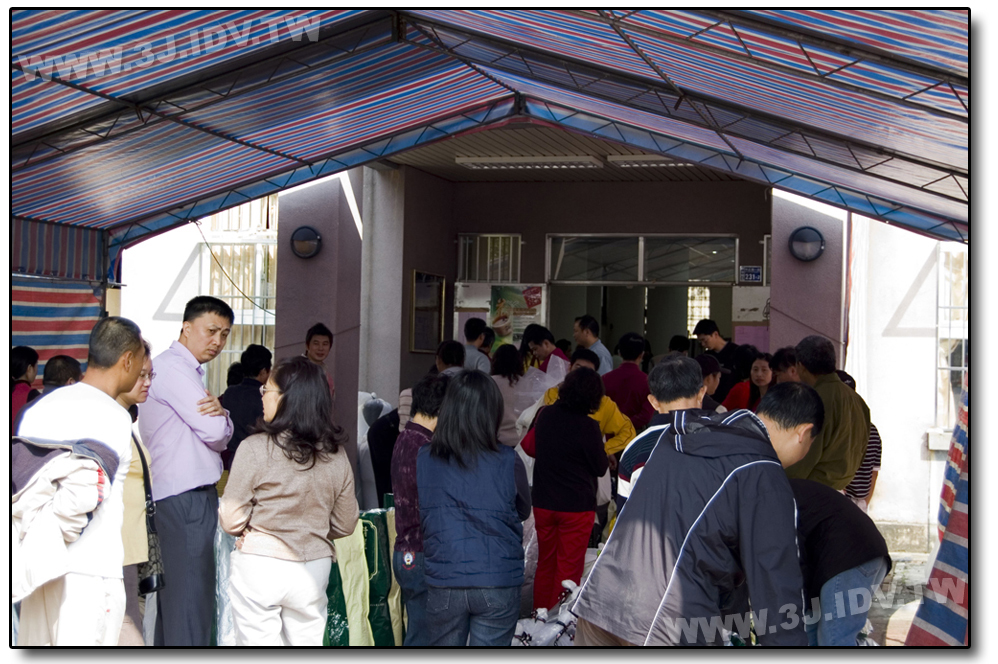
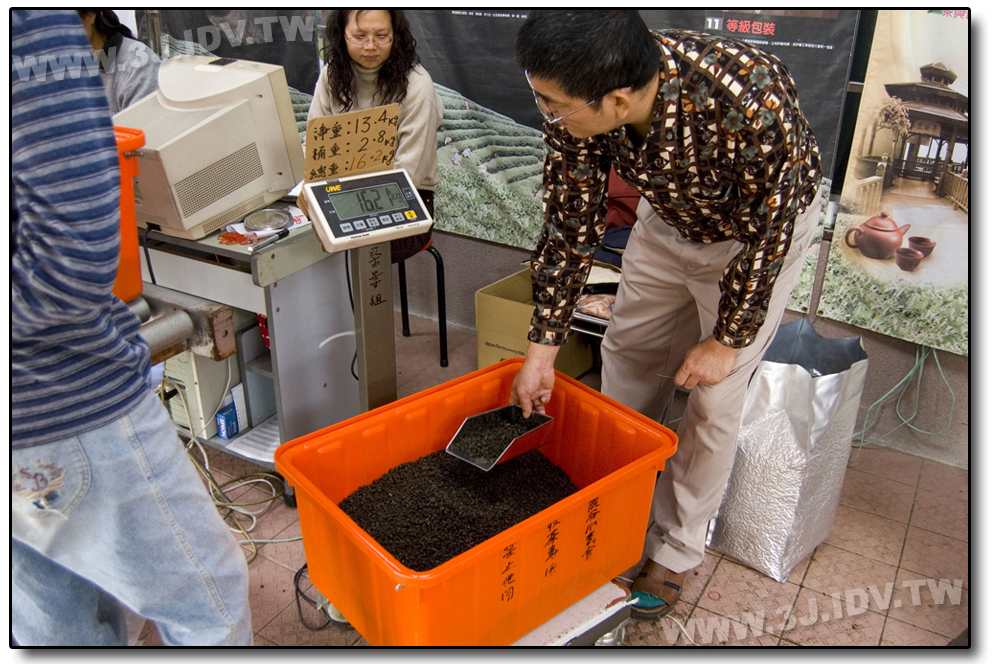
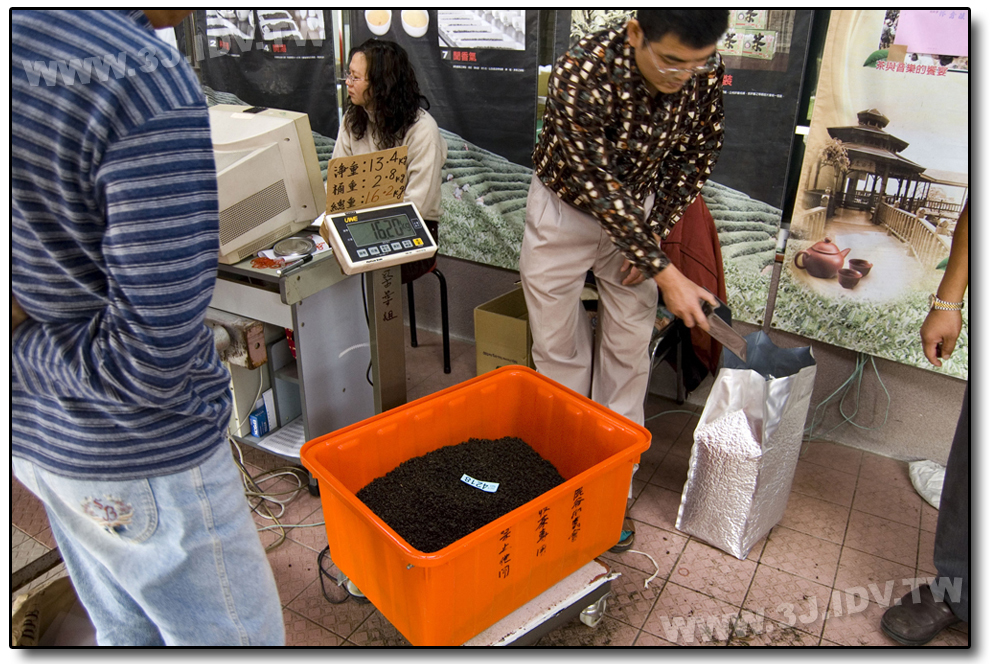

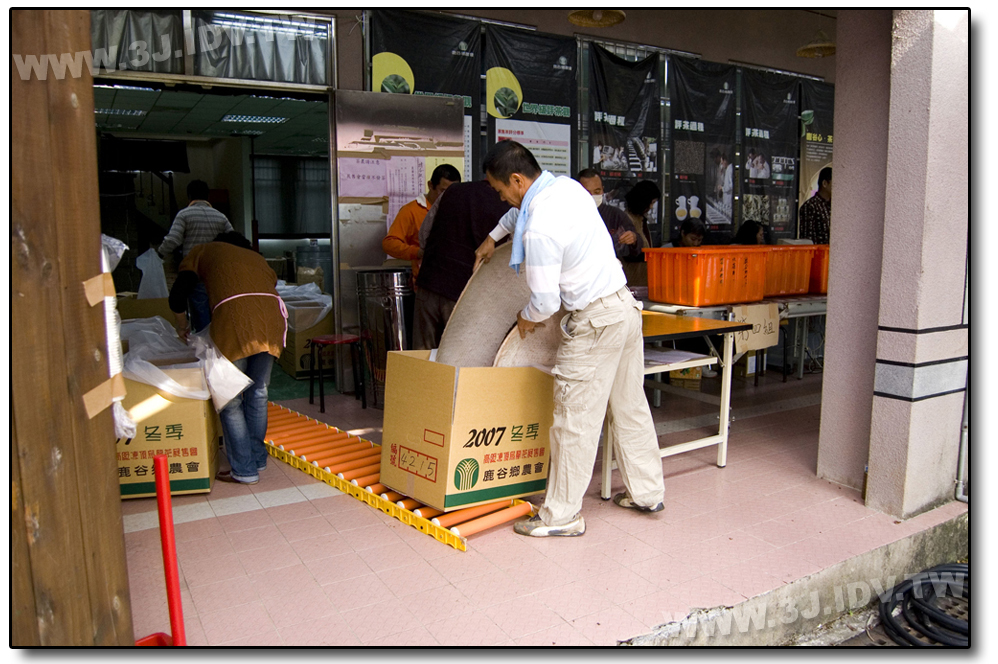
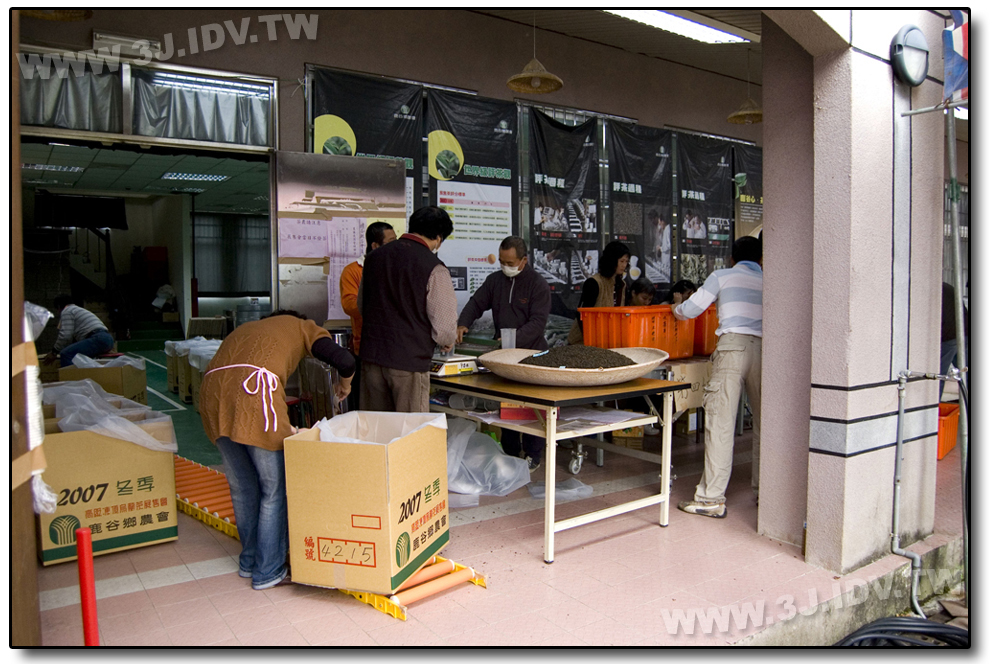
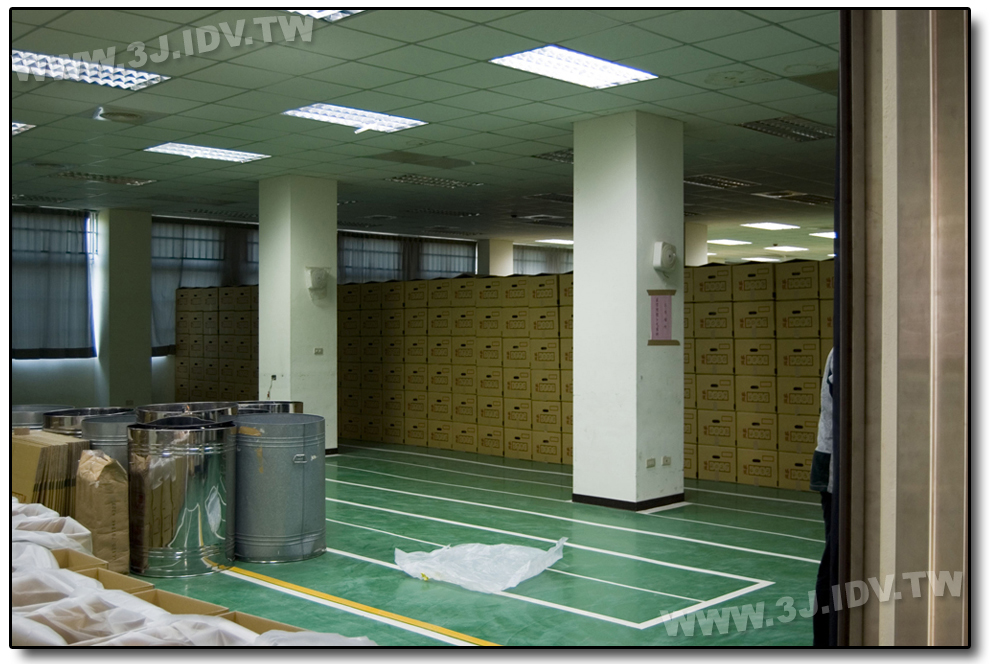


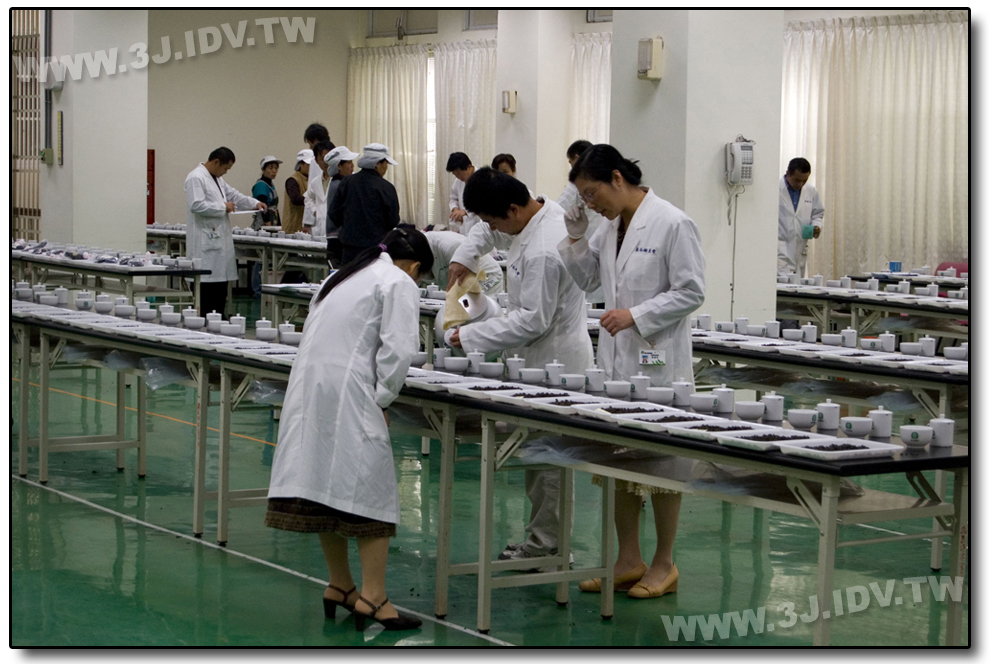




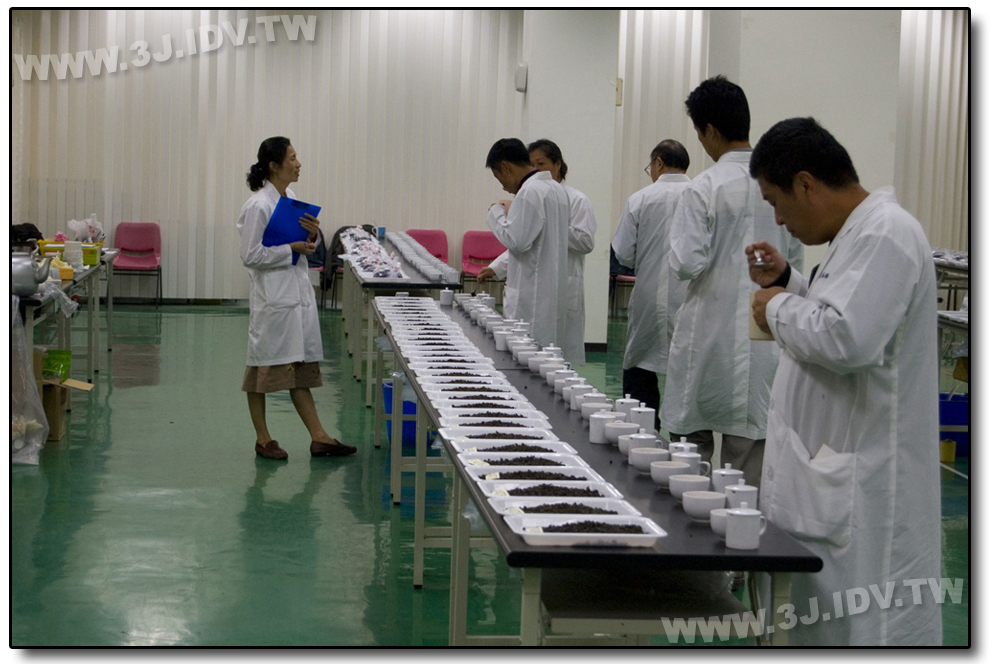
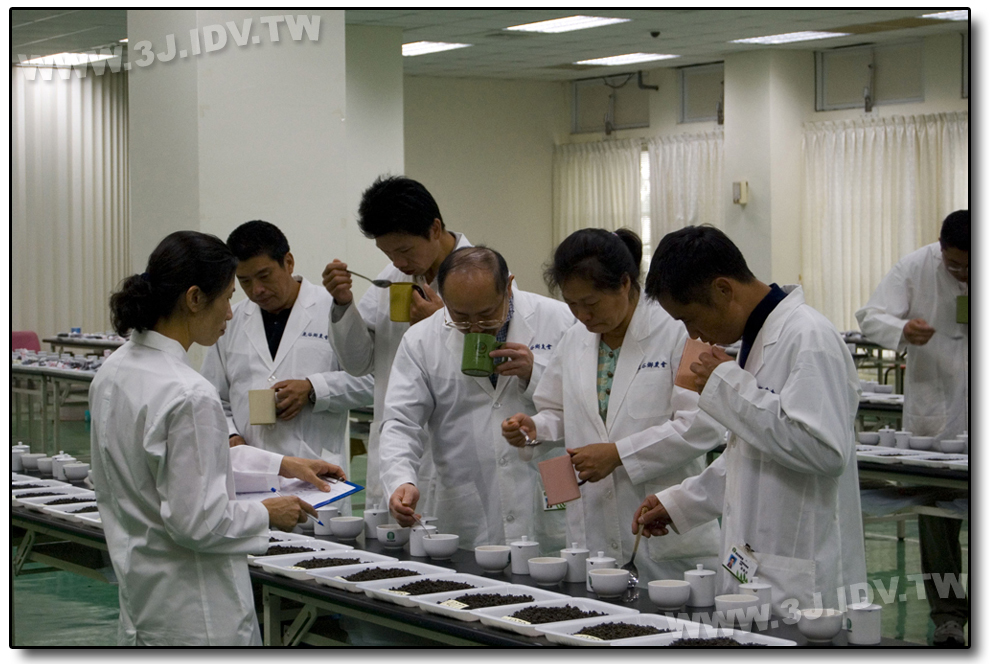

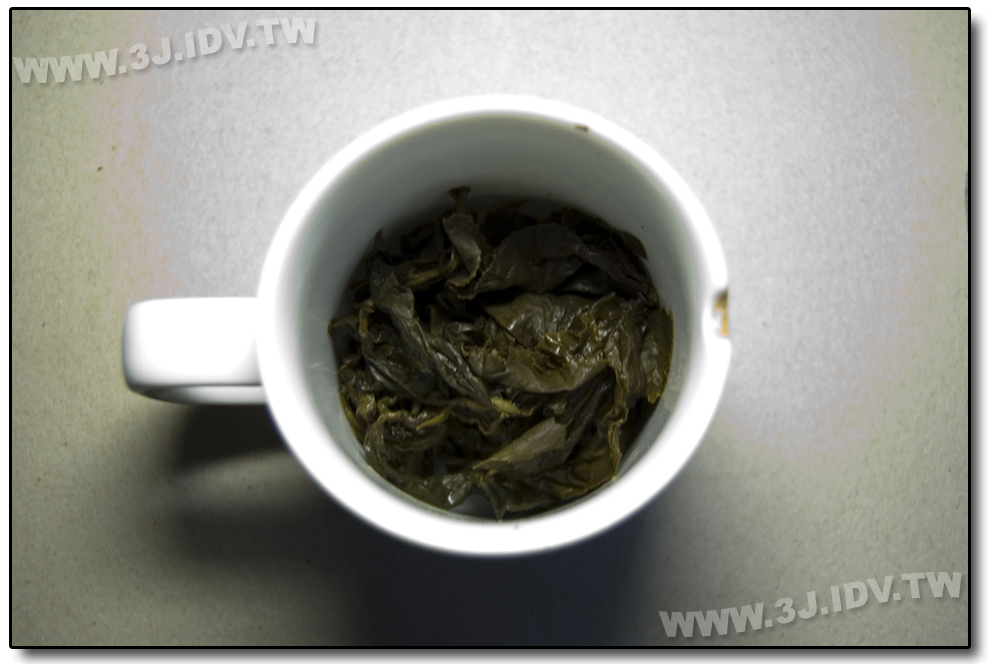
留下你的回應